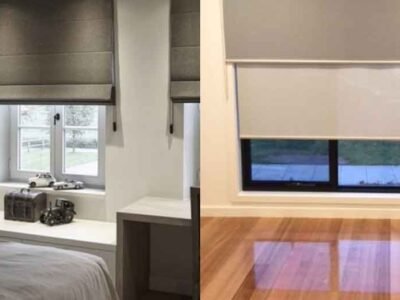We all want more space, whether it’s for lounging, working, or just feeling a little less cramped in our own homes. But what if I told you that you can actually make a room feel bigger just by changing up some design choices? Yep, it’s totally possible—and you don’t need to start tearing down walls or knocking things around to achieve it.
In this article, we’ll dive into a few design hacks that’ll make your space feel more open, airy, and expansive—from the floor beneath your feet to the ceiling above your head. Ready to rethink your space? Let’s get started!
1. Flooring Choices: Start from the Bottom
Let’s kick things off with the floor. It’s often the first thing we notice when we step into a room, and surprisingly, it has a huge impact on how big—or small—a room feels. So, how do we use flooring to our advantage?
Light-colored Flooring: If you’re aiming to make a space feel more open, lighter is definitely better. Think beige, light wood, pale tiles, or even soft gray carpets. Lighter floors reflect more light, which helps to visually expand a room. Plus, they give the room a breezy, laid-back vibe. It’s like wearing light colors in summer to stay cool—it just works!
Dark Floors: Now, you might be wondering, can dark floors make a room look bigger? Well, the truth is that dark floors have a bit of a reputation for making rooms feel smaller, but that’s not always the case. Dark floors can add depth, warmth, and sophistication to a space, creating a cozy atmosphere. But if you have a smaller room with limited natural light, dark floors might make it feel a little more closed in.
That being said, dark floors can still work in smaller spaces, as long as you balance them with other elements like light-colored walls, plenty of lighting, and some reflective surfaces. If done right, dark floors can actually add a sense of luxury and visual weight without overwhelming the room. Just make sure there’s enough contrast and brightness elsewhere in the space.
Seamless Flooring: Here’s a simple trick: if you want to make a room feel bigger, go for seamless flooring. It’s all about continuity. If you can carry the same flooring from one room into another (think hardwood or tile that flows from the living room to the kitchen), the space will feel more unified and open. The fewer transitions there are, the more expansive the space will seem.
2. Wall Color and Treatment: Give Your Walls a Boost
Now that we’ve got the floor covered, let’s talk about your walls. You might not think much about them, but wall color and treatment can seriously impact how spacious a room feels.
Light and Neutral Wall Colors: You can’t go wrong with light walls. Soft whites, pale grays, and pastels are fantastic choices to make a room feel larger and more airy. These shades reflect light, giving the illusion of more space. If you’ve got a small room, light walls are a must.
Vertical Lines: Want to make your ceiling feel higher? Vertical lines are your friend. Whether it’s a subtle striped wallpaper or vertical wood paneling, these designs will draw the eye upward. This simple trick can give the illusion of height, especially in rooms with lower ceilings.
Accent Walls: Here’s where you can have a little fun. Accent walls are a great way to add depth without closing in a room. If you choose a bold color or textured material for just one wall, it creates a sense of space and depth, pulling the eye toward that feature while keeping the rest of the room light and open.
3. Furniture and Layout: The Way You Arrange Matters
Now, let’s talk about furniture. It doesn’t matter how beautiful your furniture is if it’s crowding the space. Here are some tips on how to arrange your furniture in a way that opens up the room.
Multi-functional Furniture: When it comes to furniture in small spaces, you want to make the most of every piece. Opt for multi-functional furniture that serves more than one purpose. Think storage ottomans, fold-out desks, or beds with drawers underneath. The less clutter, the more breathing room you’ll have.
Open Floor Plan: If you have the luxury of an open floor plan, make sure you’re taking full advantage of it. Don’t overcrowd the room with oversized furniture or too many pieces. Let the space breathe! Even in smaller rooms, you can create an open feel by keeping furniture low-profile and avoiding excessive decor.
Floating Furniture: Here’s another trick that’s a game-changer. Rather than pushing all your furniture up against the walls, try “floating” your pieces. That means pulling your couch a little away from the wall or even positioning a chair in the middle of the room. This encourages movement and creates more of a flow, making the room feel larger and more open.
4. Lighting: Let There Be (A Lot of) Light
Lighting isn’t just about turning on a few lamps. It’s a powerful tool to expand a room and make it feel larger. You want to make sure your lighting is both functional and flattering.
Natural Light: If you’ve got access to natural light, use it! Keep your windows unblocked and opt for sheer curtains that let light in while maintaining privacy. Natural light opens up a room and makes it feel airier.
Layered Lighting: Don’t rely on just one light source. Layer your lighting—use a combination of ambient, task, and accent lighting. For example, overhead lights for general illumination, table lamps for reading or working, and wall sconces or floor lamps for a cozy touch. The more varied the light, the more depth you’ll create, which helps the space feel bigger.
Mirrors and Reflective Surfaces: If you want to bounce light around the room, mirrors are your best friend. A strategically placed mirror can reflect both light and the view outside, making your space seem endless. You can also use other reflective surfaces like glass coffee tables or metallic accents to amplify the effect.
5. Ceilings: Don’t Forget About the Top!
Often overlooked, the ceiling plays a huge role in how a room feels. You don’t want to forget about this vertical space when designing your room.
White or Light Ceilings: Keep your ceilings light-colored to make them feel higher and more expansive. Dark ceilings can make a room feel like it’s closing in on you, so stick with whites, light grays, or soft pastels up top.
Crown Molding: If you want to add a little elegance while still creating the illusion of height, crown molding can do the trick. It draws the eye upward and adds a touch of sophistication without taking up any valuable floor space.
Vertical Features on Ceilings: Got high ceilings? Make the most of them! Vertical elements like exposed beams or a dramatic chandelier can draw the eye up, enhancing the feeling of height and space. This works particularly well in rooms with vaulted ceilings.
6. Clever Use of Space: Maximize Vertical and Hidden Areas
Finally, let’s talk about the little things—those hidden areas that you might not think about when designing a room. But trust me, they matter.
Vertical Storage Solutions: If you’re short on space, go vertical. Tall bookshelves, wall-mounted shelves, and floating cabinets can help you store things without taking up floor space. The more you can store upward, the more free space you’ll have to move around.
Under Furniture Storage: Don’t forget about the space beneath your furniture. Invest in furniture that has built-in storage, like a bed with drawers or a sofa with hidden compartments. It’s a great way to free up floor space and reduce clutter.
Conclusion: Make Your Space Work for You
So, there you have it! From light floors to tall shelves, there are tons of simple yet effective ways to make a room feel bigger and more open. The key is balance—using light, smart furniture choices, and clever tricks to maximize every inch of your space.
Now, go ahead and try out a few of these ideas in your own home. Whether it’s switching up your flooring or hanging a mirror, these small changes can make a big difference. Let your space work for you, and soon enough, you’ll be living large—no major renovations required!













